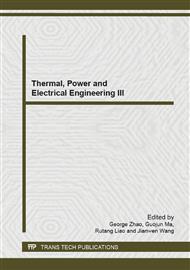p.3
p.7
p.11
p.14
p.18
p.22
p.27
p.32
Fluoroimmunoassay Based on FITC-Labeled Antibody for the Determination of Estradiol
Abstract:
A new fluorescence immunoassay with high sensitivity, time-saving, good precision and reliablility was proposed for the determination of estradiol (E2) in human urine. The complex of FITC-labeled anti-E2 antibody was produced and regarded as a probe in this system. Ninety-six microplate was coated with ovalbumin conjugated E2 antigen as solid phase for the immunoassay. The method parameters affecting the determination, such as the concentration of immunoreagents, pH, and other relevant variable conditions upon the immunoassay were studied and optimized systematically. Under the optimal experimental conditions, it was found that the proposed method exhibited high performance with the detection limit of 9.2 pg/mL, and the linear range of determination of 0.01-1000 ng/mL. The recoveries were 93.58-105.82% with the relative standard deviations (RSD) 5.52-7.09%. The proposed method has been used for the determination of E2 in human urine with satisfactory results, and may be expected to find wide application in other environmental samples.
Info:
Periodical:
Pages:
3-6
Citation:
Online since:
June 2014
Authors:
Price:
Сopyright:
© 2014 Trans Tech Publications Ltd. All Rights Reserved
Share:
Citation:


